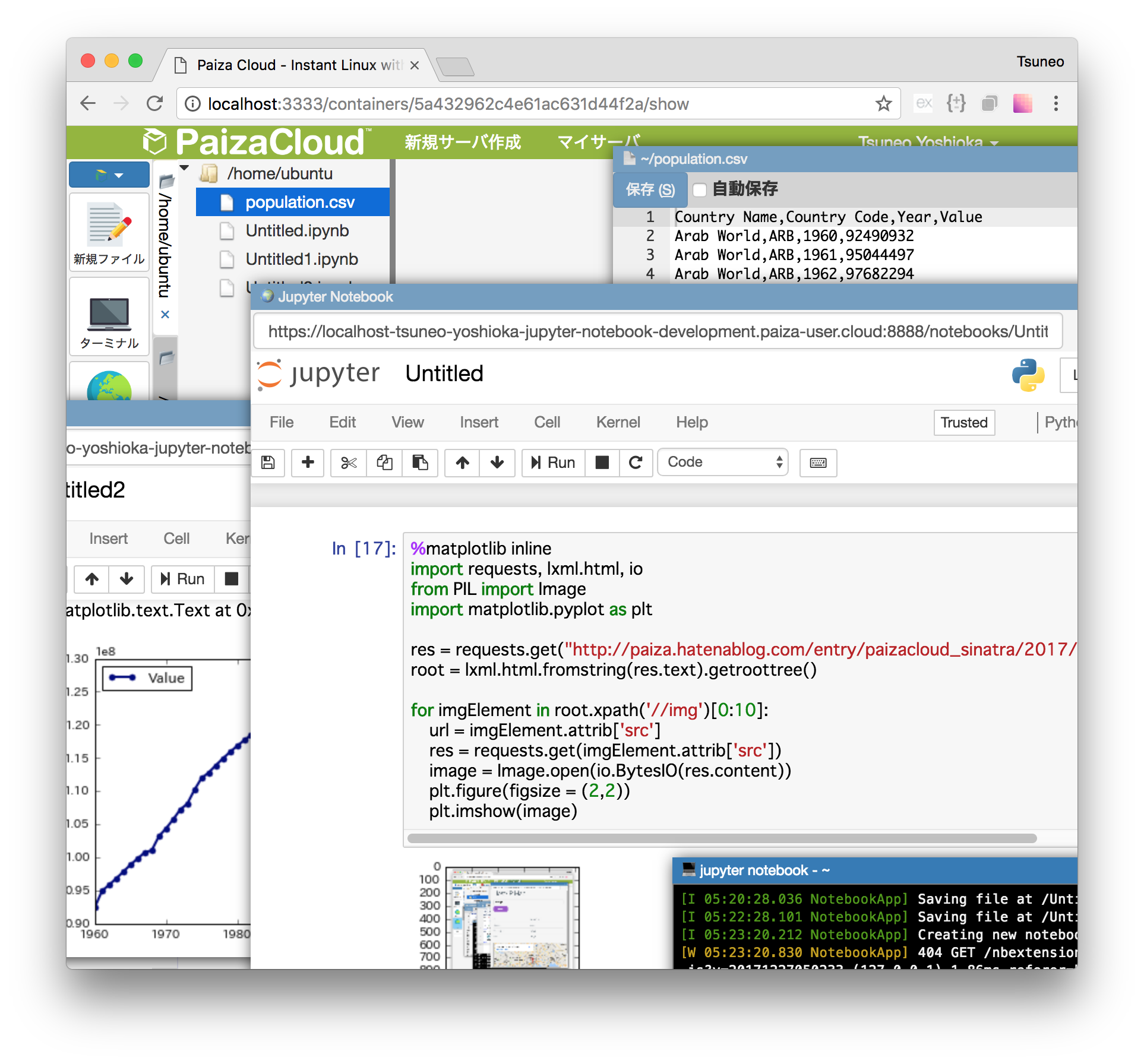

- Jupyter notebook online account how to#
- Jupyter notebook online account install#
- Jupyter notebook online account archive#
- Jupyter notebook online account software#
Execute the following commands one by one. I’ve modified the original code so that it can add the Dropbox access token from the notebook. Open Google Colab and start a new notebook.Ĭlone this GitHub repository. tar -cvf dataset.tar ~/DatasetĪlternatively, you could use WinRar or 7zip, whatever is more convenient for you.

Jupyter notebook online account how to#
The code snippet below shows how to convert a folder named “Dataset” in the home directory to a “dataset.tar” file, from your Linux terminal. One possible method of archiving is to convert the folder containing your dataset into a ‘.tar’ file.
Jupyter notebook online account archive#
Therefore, I recommend that you archive your dataset first. Uploading a large number of images (or files) individually will take a very long time, since Dropbox (or Google Drive) has to individually assign IDs and attributes to every image. You can also follow the same steps for other notebook services, such as Paperspace Gradient. Transferring via Dropbox is relatively easier. This sets an upper limit on the amount of data that you can transfer at any moment. Dropboxĭropbox offers upto 2GB free storage space per account. The most efficient method to transfer large files is to use a cloud storage system such as Dropbox or Google Drive. Some of the methods can be extended to other remote Jupyter notebook services, like Paperspace Gradient. I’ve also included additional methods that can useful for transferring smaller files with less effort. This blog compiles some of the methods that I’ve found useful for uploading and downloading large files from your local system to Google Colab. But you might have become exasperated because of the complexity involved in transferring large datasets. If you have heard about it, chances are that you gave it shot. If you haven’t heard about it, Google Colab is a platform that is widely used for testing out ML prototypes on its free K80 GPU. Refer to the following articles for the installation of the Jupyter Notebook.By Bharath Raj How to Upload large files to Google Colab and remote Jupyter notebooks Photo by Thomas Kelley on Unsplash Python is a requirement (Python 3.3 or greater, or Python 2.7) for installing the Jupyter Notebook itself. Jupyter has support for over 40 different programming languages and Python is one of them. What programming languages are supported by the Jupyter Notebook? The OS has a set of paths to executable programs in its so-called environment variables through which it identifies directly what exactly the pip means.
Jupyter notebook online account install#
To install Python libraries, we use pip command on the command line console of the Operating System. Within the Python IPython console cell, jupyter allows Python code to be executed. How do I run a Python program in Jupyter?
Jupyter notebook online account software#
How to install Jupyter Notebook in Anaconda Navigator?ġ Launch Anaconda Navigator: 2 Click on the Install Jupyter Notebook Button: 3 Beginning the Installation: 4 Loading Packages: 5 Finished Installation: PIP is a package management system used to install and manage software packages/libraries written in Python. Jupyter Notebook can be installed by using either of the two ways described below: Install Python and Jupyter using the Anaconda Distribution, which includes Python, the Jupyter Notebook, and other commonly used packages for scientific computing and data science.


 0 kommentar(er)
0 kommentar(er)
